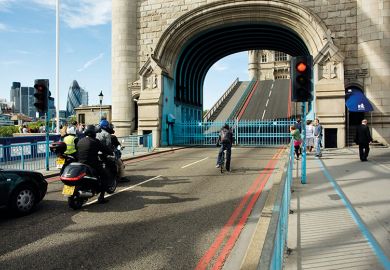Labour has published its manifesto, following last week’s leak of a draft. On the pledge to scrap tuition fees, the same problematic wording remains – with one of the errors corrected, but the more glaring one left in place.
What is new is the publication of a costing for Labour’s plan to abolish fees and reintroduce student maintenance grants: £11.2 billion a year.
The manifesto says: “At a time when working lives and the skills our economy needs are changing rapidly, governments have the responsibility to make lifelong learning a reality by giving everyone the opportunity to access education throughout their lives.
“To meet this responsibility, Labour will create a unified National Education Service (NES) for England to move towards cradle-to-grave learning that is free at the point of use.”
The pledge to scrap fees comes within this context. Funding universities via direct public funding rather than student loans creates extra cost for the government. The then coalition government opted to switch to a principally loans-based system, introduced in 2012 when fees were trebled to £9,000, because loan outlay to students does not add to the deficit in any significant way, under current accounting conventions. The Conservative government has scrapped all maintenance grants and converted them to loans.
Loan outlay, on which the current system is based, does add to the national debt. And a portion of that loan outlay will never be repaid by graduates, so will have to be written off by the government.
The footnotes to Labour’s funding plan, to replace loan funding with direct public funding, explains that its costing is “based on provisional English figure for Student Loan Company loan outlay 2016-17. The final figure may be lower as this will not incorporate planned fee waivers or withdrawals before Term 3.”
The footnote adds: “See also ‘The cost of abolishing tuition fees’, Andrew McGettigan, May 2017.”
Following the leaking of Labour’s draft manifesto, the Institute for Fiscal Studies had estimated that scrapping fees and reintroducing grants would add to the deficit by “around £12.7 billion” a year, with a “long-run” cost of “around £8 billion”, reflecting that a portion of loan outlay under the current system will never be repaid.
Labour’s footnote refers to this 12 May blog post by McGettigan, a researcher on higher education and expert on the student loans system, after the draft manifesto had leaked. In it, he says that the estimates for the cost of Labour’s policy produced by the IFS and London Economics are both useful, but suggests an alternative method of estimating the costs, based on Student Loans Company figures for current loan outlay.
McGettigan suggests an “estimated tuition fee outlay for 2016/17 in the region of £8.5bn for FT undergraduate” – language echoed in Labour’s statement that its calculation is based on “provisional English figures for Student Loan company loan outlay 2016-17”.
Work in UK higher education? Please take part in our general election survey
Labour’s footnote on grants says that “spending on maintenance grants in the last year before abolition was £1.57bn (2015-16 prices)”.
If Labour has added a grants cost comparable to £1.57 billion to a scrapping fees cost of £8.5 billion, it is not clear what else is included in the final cost figure of £11.2 billion. Or perhaps it came to this figure in a different way.
It is not clear from Labour’s manifesto whether it is committing to scrap tuition fees just for full-time undergraduates (the cost McGettigan calculated) or – at added expense – part-time undergraduates as well.
Hopefully Labour consulted McGettigan at an earlier stage than his 12 May blog following the leaked draft manifesto.
The main body of the manifesto offers the same rather anaemic words as the draft on the commitment to scrap fees. There is no reference to higher education as having a public, social benefit, or to wanting to kill off any prospect of a market in fees where some universities charge significantly more than others – two of the key arguments that supporters of additional public investment in universities would make.
Where the draft pledged to make higher education “free in Britain”, the final version promises to make it “free here” – correctly reflecting the fact that Labour in Westminster cannot abolish tuition fees in Wales or Northern Ireland (Scotland is already fees-free).
But the published manifesto retains these words from the draft: “There is a real fear that students are being priced out of university education. Last year saw the steepest fall in university applications for 30 years.”
As I pointed out last week, there wasn’t a fall in applications “last year”. There has been a fall of 5 per cent in applications for undergraduate study at UK higher education institutions for courses starting in autumn 2017 (according to Ucas figures at the January deadline), which is not as big as the decline in 2012, the year in which fees were trebled to £9,000.
The only obvious source I can see for the claim about “the steepest fall in university applications for 30 years” is a vice-chancellor’s guesstimate from a 2012 Guardian article about the predicted fall in applications for entry that year.
Labour’s costing document states that spending commitments will be funded by tax measures, chief among which are rises in corporation tax, an increase in income tax “for top 5 per cent” and cracking down on tax avoidance.
The usual points made by critics – that publicly funded higher education requires those who do not enter it to pay for it, that it means a cap on the numbers entering university – will be levelled in the Conservative attack. Labour's responses will need to be sharper than their manifesto's wording to be effective.




